In today’s society, going local is key: food and wine lovers increasingly want, and search for, locally grown, locally produced foodstuffs. This is one reason why over the last twenty years we have seen a slew of Italian native grapes rise to the fore and become (almost) household names, such as, for example, Carricante, Pecorino, and Timorasso, all wine grapes that only thirty years ago hardly anyone knew anything about and even fewer had tasted any wines of. However, still today, many of Italy’s native grapes remain unknown to most wine lovers and wine professionals, and that includes some real gems the wines of which could easily rank with the world’s best, or at the very least, most interesting. In this article I take you on my very own private magical mystery tour of Italian native wine grapes, choosing 24 native Italian grapes and their wines that you must absolutely get to know. In fact, 24 is a very arbitrary number, for it could easily have been, and probably should have been, fifty or sixty or even seventy, but space limitations are forcing me to keep the list shorter than I would like. Clearly, for all information you might need on Italy’s native grapes, I refer you to my two award-winning books detailing the subject, Native Wine Grapes of Italy and Italy’s Native Wine Grape Terroirs (both published by Berkeley’s UC Press). In any case, the thirty grapes I describe here represent a very good intro to what is so cool and unique about Italian fermented grape juice. Some of these grapes you will already know about, some you may have heard of, and others you might have never have heard of at all. But therein lies the interest, the charm, and yes, the magic even, of native wine grapes (and not just Italy’s, for that matter); and when all is said and done, should I have been able to pique your interest about even just one of them and its wines, so much so that you go out and ask your local wine shop for a bottle or to sind you one, then I will have done my job. In fact, a wine writer’s job.
At over 500 officially recognized different native grapes and counting, roughly 30% of the world’s wine grapes are Italian; to help you fully grasp the significance of that statement, just keep in mind that France, Spain and Greece (or Portugal, depending whom you choose to believe), the three countries that have the next most native grapes, don’t come anywhere close to Italy’s figure even if you were to add the wine grapes of all those three countries together.
Native grapes in Italy are not mere conversation pieces, but are actually used to make many different wines in commercially relevant numbers (unlike some other countries in which native grapes are mostly of anecdotal or academic interest only, given that so few wines are actually made with them, though of course everyone has now jumped on the bandwagon and will be more than happy to give you their long list of local grapes).
Ever since I started writing about wine professionally back in the 1980s, I have been fascinated by grape varieties and their differences, not to mention the very different wines each is associated with. I would like to tell you that this was due to a Eureka-like moment while reading Galet’s masterpiece, but in fact, my interest in wine grapes had a much more mundane and less academic origin. Simply put, I love classifications of all kinds: clearly, well-constructed classifications that highlight diversity in a proper and scientifically accurate context. For example, one of my favourite pastimes is no-kill fly fishing for trout. To make a long story short, given my love of classifications, it won’t surprise you to know that, ever since my adolescence, I have been trying to catch (and release) just about every species of trout imaginable (and there are an unbelievable number out there all over the world). This is becaue trout that live in different waters containing different mineral concentrations, for example, will look different from the exact species of trout that lives in another, different body of water. So it should no longer surprise you much that someone totally excited about the morphologic and behavioural differences between a Gila and an Apache trout, or different strains of Cutthroat trout (say Lahontan as opposed to Paiute) would also take a huge shining to all the many different grape varieties that call Italy their home. Therefore, writing Native Wine Grapes of Italy (UC Press, 2014), the multi award winning tome detailing Italy’s native wine grapes and wines as had never been done before, followed up by Italy’s Native Wine Grape Terroirs (UC Press, 2019) was the logical consequence of my deeply rooted love for wine grapes and their wines. The books helped pique the interest of wine experts and lovers worldwide, but sooner or later Italy’s native wine grapes would have had their day in the sun. Reasons why this was a no-brainer are numerous, but the most important is that wines made with native grapes have colour, aroma and flavour spectrums completely unlike those made with international grapes (international grapes are those grapes grown all over the world and that are associated with wines that, though by no means identical, are still fairly similar to each other). Clearly, wines made with native grapes are not interestingly different for difference’s sake: if that were the case, they would have been little more than a flash in the pan. Instead, the ranks of wines made with new Italian native grapes are augmenting every year, denoting how the interest in them is not just alive and well, but burgeoning. This is because such wines have plenty to offer the wine loving public at large, beginning with often exceptionally interesting histories spanning millennia, a strong attachment to specific places and people (and hence their traditions), an ecologically friendly agriculture (clearly it is native grapes that are best adapted to specific territories where they have lived for eons, not the hottest grape variety of the month that gets planted everywhere, even where it had never lived before). Last but not least, wines made with many of Italy’s little known, once forgotten native grapes are simply excellent: so you might just say, when all is said and done, that Italy’s native grapes are busting out all over the place because well, in the end, it’s just too hard to keep a good grape down.
As recently as 1980, Falanghina was an essentially unknown grape variety in most of Italy (never mind that there are at least two distinct Falanghina varieties). In 1990, basically nobody outside those living on or near the Etna volcano knew anything about Nerello Mascalese and Carricante, two grapes that make some of Italy’s hottest wines today. Only twenty years ago, nobody in Italy outside of the grape’s immediate production zone knew what Timorasso was and fewer still had ever tasted a monovariety Uva di Troia wine. In fact, before 2000, you would have had a hard time finding more than two or three monovariety wines made with the likes of Malvasia Bianca di Basilicata, Nerello Cappuccio, Nascetta, Pecorino, Perricone, Nasco, and a slew of other noble Italian wine grapes in anything other than small productions intended for local consumption only. By contrast, today there are many different bottlings each of, for example, Pecorino, Passerina, Monica and Nascetta wines (that not all of the wines supposedly made with these varieties really remind me of what the grape variety is supposed to give, or cannot, would require an article all to itself and is best left for another article). At the same time, we have learned much about wine grapes we thought we knew realtively weel: and so Montepuclaino is no longer thought of as “just” a workhorse grape good for making only cheap rustic everyday quaffers good for barbecues and little else, Trebbiano d’Abruzzo does not necessarily have to be a horribly insipid wine, Cataratto wines do not necessarily start oxidizing the minute they go into bottle, Grignolino wines can actually age and improve after fifteen years of cellaring and so forth. And so it is that in the present age, the world hectarage devoted to the Italy’s native grapes (Barbera, Fiano, Montepulciano, Ribolla Gialla and Vermentino immediately spring to mind) is increasing rapidly every year (though clearly nowhere near that -yet?- of the established international wine grape superstars such as Chardonnay, Merlot and Cabernet Sauvignon). Even more interestingly, some wines made with Italian native grapes are now commanding increasingly high prices worldwide, a sure-fire sign of increased consumer interest everywhere.
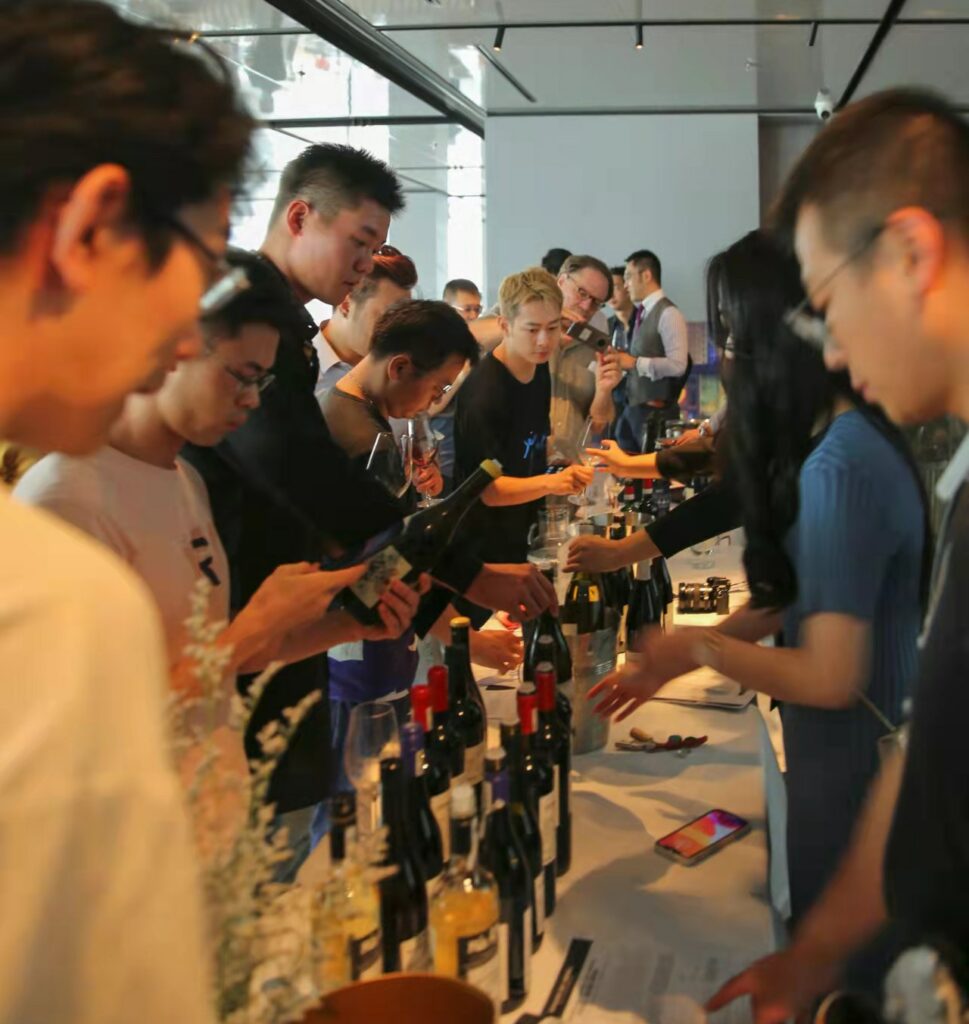
The grapes and the wines
1. Aglianico
Most people have tried an Aglianico wine at some point in their wine-imbibing careers, and even more have heard of the variety, so it might surprise you to find it placed in a “native wine grapes list” of grapes you should get to know. However, my point is not that Aglianico isn’t well-known, but rather that few people outside of Italy are aware of just how good and ageworthy its wines can be (in Italy, only Nebbiolo and Sangiovese make similarly good and ageworthy, potentially world-class reds). Unfortunately, questionable producer talent, archaic practices and old cellar equipment hampered Aglianico’s rise to stardom, and so it was hard for most people who couldn’t taste many different Aglianico wines to realize just how great the wines could be (when well-made). Today that is no longer the case, and though some rustic, overly-alcoholic, needlessly oaky and dark wines are still being made, the likelihood is that you’ll get hold of a a very good, very well-made wines when you decide to give Aglianico a try, be it at the wine store, the wine bar or the restaurant. Aglianico also translates terroir exceptionally well, with the Aglainico wines of Campania’s Taurasi being totally different from basilicata’s Aglianico del Vulture. Theer’s also some good Aglainico coming out of Puglia, but fact is this is one grape variety that deserves to be planted more and more internationally as well (tehre are already some very good examples made in places as far away from Italy, and quite off the beaten track, such as Texas and New Mexico, if you can believe it!).
Elena Fucci Aglianico del Vulture Titolo 95
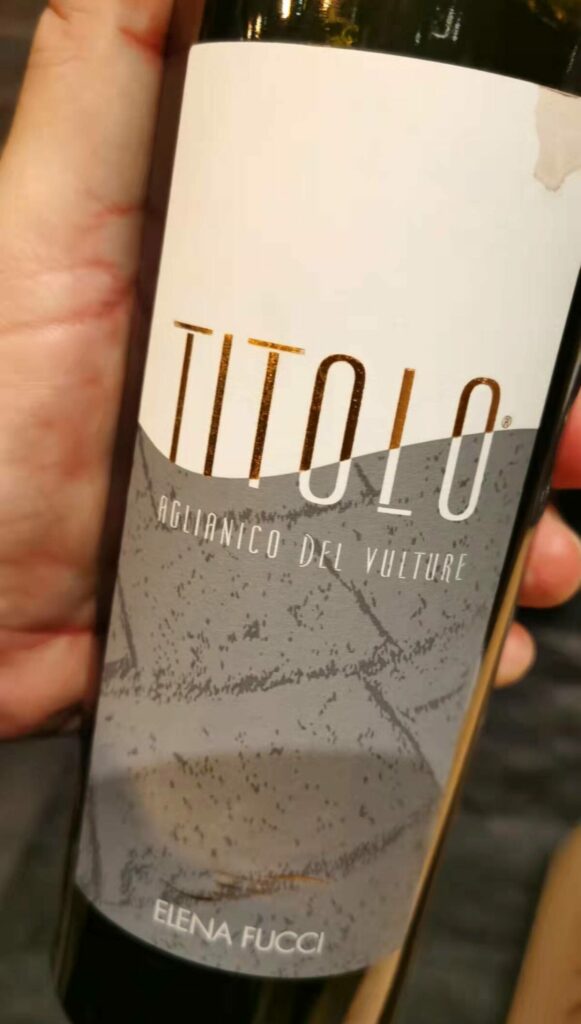
Nothing to say, Salvatore Fucci and now his daughter Elena have turned this winery, unknown to almost everyone as recently as 2000, into one of Italy’s leading wine estates. Excuse the play on worlds, but the Titolo is literally “entitled” to its role as Italy’s leading light in all matters Aglianico, because there simply isn’t any better wine made from this grape in the Vulture, Italy or the rest of the world. A truly refiend red wine, blessed by noble tannins and harmonious acidity that is varietally accurate and that actually speaks of the Vulture too, this is simply a work of art. Drinking window: 2025-2035.
Guastaferro 2004 Taurasi Primum 95
One hundred and fifty years old vines plus the remarkable winemaking talent of Raffaele Guastaferro make for a ncie combination; add to that one of the ebst Taurasi vintages of the last 20 years (surpassed only by 2001 and 2010) and what you get is a memorable wine. Rose and violet mix it up with red cherry and smoky plu, saline nuances add interest on the long suave finish. And believe it or not, this thing is still relatively young and will last and possibly improve further, in a good cellar. Drinking window: 2025-2035.
Grifalco 2015 Aglianico del Vulture Damaschito 94
Grifalco’s wines showcase all Aglianico can be, and the Damaschito is areal step upmin quality from the very good entry level Aglianico del Vulture: this is richly fruity, herbal and mineral (nuances of black/red cherry, tobacco, flint), full-bodied, fleshy, steely and complex. It helps that the viens grow in one of the best areas of the Vulture, Maschito and especially Forenza. Drinking window: 2025-2035.
Mastroberardino 2009 Taurasi 94
The Mastroberardino family deserves all the credit in the world for having saved many local grapes (Fiano is the best example) but also for all it has done for Campania’s many other high quality but once very little known grapes. A case in point being Aglianico: their Taurasi is the benchmark for all others to follow, and this 2009 is an excellent start to elarning about the variety, gven the vintage’s slightly more soft, rounder take on the potentially tannic, burly Aglianico wine. By contrast, this creamy, suave beauty will slide on your palate with wave after wave of juicy fruity goodness spiked by hints of chocolate and herbs. Drinking window: now-2033.
Grifalco 2018 Aglianico del Vulture 91
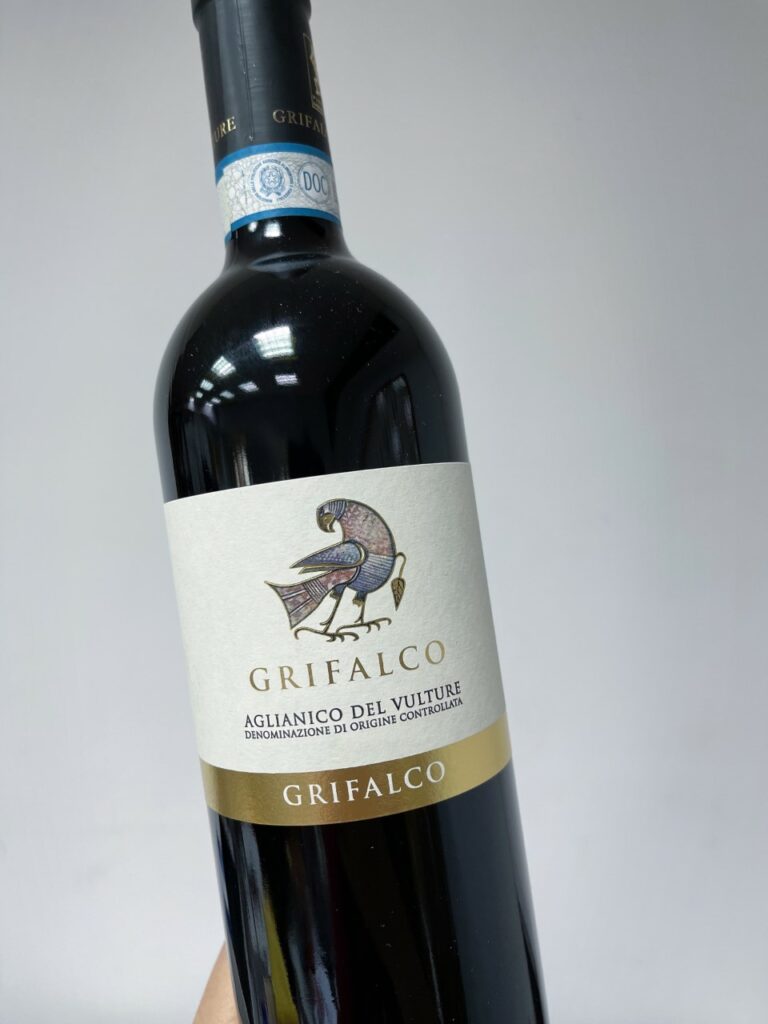
Bright juicy and refined, with delicately flinty naunces to complexify the vibrant red cherry and tobacco aroams and flavoursthis juciy little number is simply irresistible from start to finish. Drinking window: now-2028.
2. Freisa
Freisa wines are a confusing lot since they can be still, sparkling, dry and sweet. But when the variety’s brutal tannic clout is tamed, dry Freisa wines are just fantastic: the closest relative of Nebbiolo (outside of Nebbiolo Rosè), Freisa wines are redolent of strawberry, rose and herbal nuances, but need age to show best (and they will then recall Nebbiolo wines to a degree that I know for experience even experienced tasters cannot differentiate them from barolos when tasting blind). The best Freisa wines you’ll ver tatse were made many years ago by Scarpa and by Giacomo Conterno (of Monfortino fame). Today, Scarpa still makes a little freisa, but your best bets are Balbiano, Brovia, Ca’ del Prete, Cascina Gilli, GB Burlotto, GD Vajra, Giacomo Fenocchio, Giuseppe Mascarello, Giuseppe Rinaldi, La Montagnetta, Lano, Tenuta Tamburnin, and Tenuta Santa Caterina, but there are others too. Any one of these wines will turn you into an instant Freisa-supporter. If you really want to do yourself a favour, next time in Italy, eschew all the usual spots and take a drive in the Asti area and visit as many local producers there: besides the often boring Barbera wines that everyone will hoist upon you, make sure you insist on tasting their Freisa wines, because it is those that are more often than not the real stars of the show.
Brovia 2018 Freisa Langhe La Villerina Secca 96
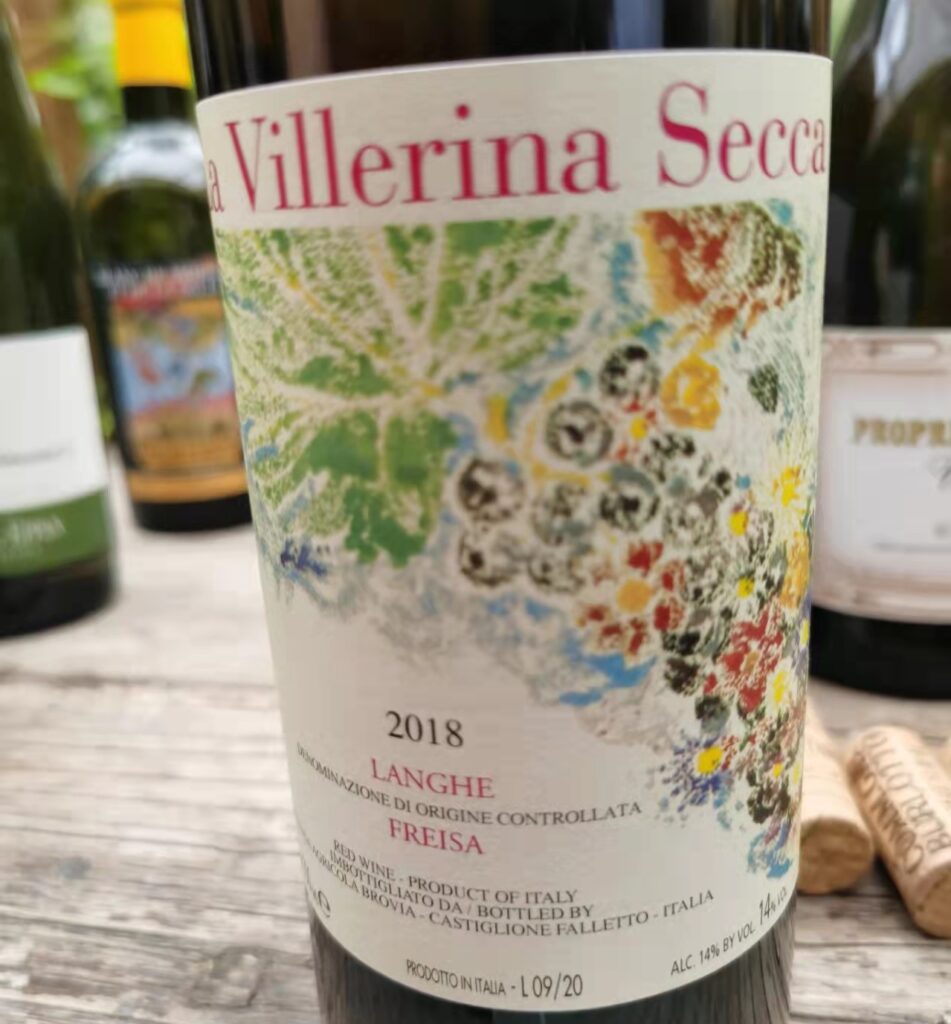
One of the best young Freisa wines I have ever tasted, this absolutely nails the essence of the grape and all of its potential greatness. I swear you will do a double-take and look at the label thinking you have grabbed a bottle of Nebbiolo by mistake. Medium red in colour, with explosively perfumed notes of rose and sour red cherry, the tannins here are not just polished but special and the long, sweetly spicy red fruit-infused finish just lasts and lasts. Fantastic stuff. Drinking window: now-2029.
GD Vajra 2016 Freisa Langhe Kyè 94
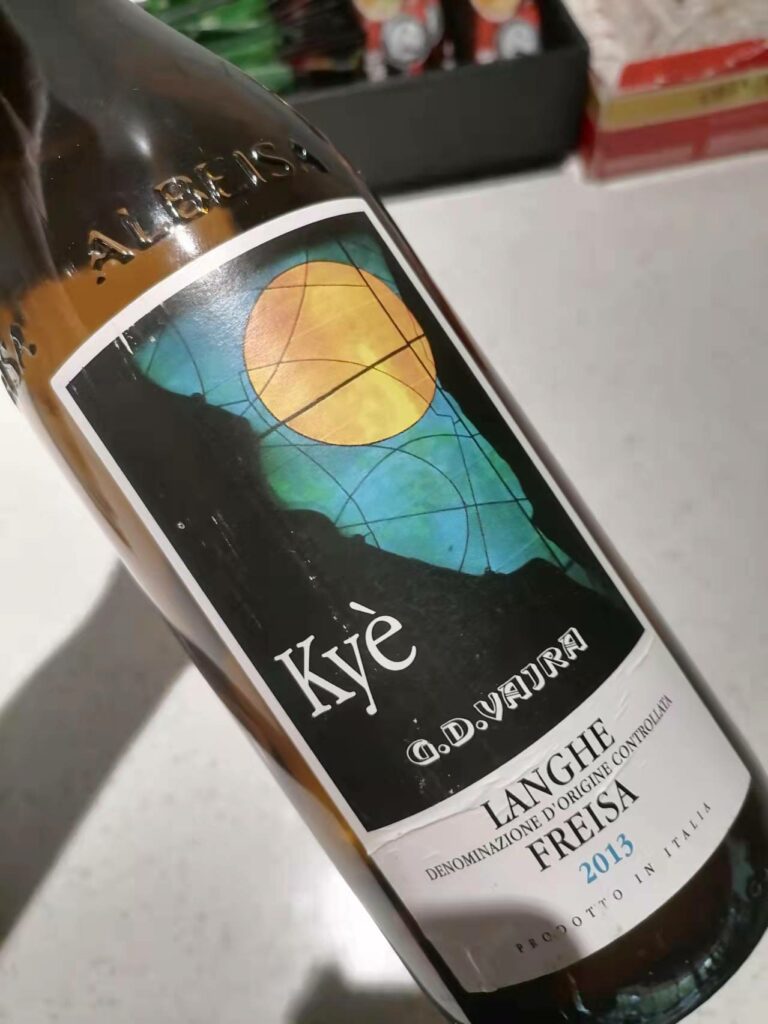
Deep inky purple-ruby. Aromas and flavours of plum, dark cherry, violet and rose dominate. The finish is long and tannic but polished. Will likely be a really great, great Freisa, but forget about this in the cellar for another ten years. Vajra’s Kyè is one of the three or four best Freisa wines of all, but is slightly atypical, beginning with the ultra dark colour more reminiscent of Barbera than actual Freisa (though Freisa wines do have a darker colour than Nebbiolo, the grape’s closest relative): serve this beauty blind at twelve-fifteen years of age and you’ll fool all your Barolo and Barbaresco-loving friends. 2028-2038.
GB Burlotto 2019 Freisa Langhe 91+
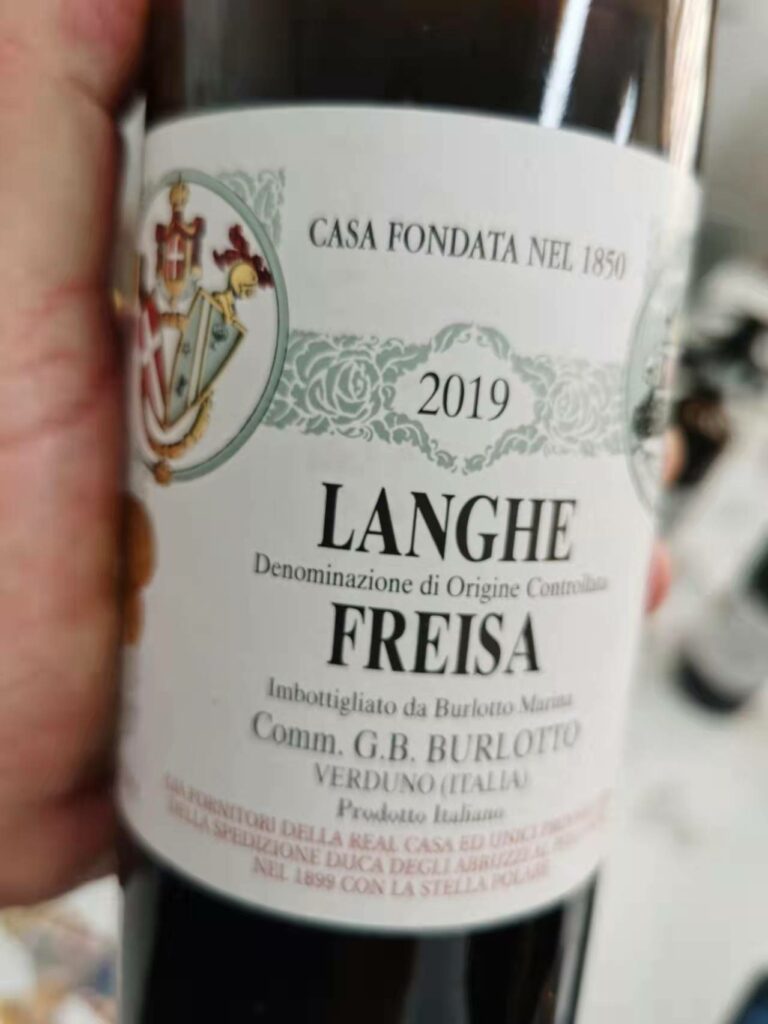
Burlotto makes one of the best Freisa wines of all, and I urge you to hunt down the 2018 (95 points) in which the tannins are somewhat tamer and that is drinking beautifully. The 2019 is pure and juicy, but is still carrying its hefty tannins front and square so you’ll need to be patient with this beauty before it will reveal all of its considerable charms. Certainly, the purity of fruit and focused delivery of Freisa-typical aromas and flavours (red cherry, violet, rose, minerals) and the harmonious acidity suggest a very long and graceful evolution in the bottle. Drinking window: 2026-2035
3. Lacrima
Lacrima is an moderately aromatic red grape the most famous wiune of which is Lacrima di Morro d’Alba: Morro d’Alba is a town in the Marche region of Italy and it has nothing to do with Alba in Piedmont, another town altogether. Lacrima wines are starting to become popular again, but the truth is that the biggest producer today, Marotti Campi , still produces about 60-70% of all the Lacrima wines you’ll find and drink, and that goes for bottles that sport some other people’s labels too. No matter, gven that the wines are so good, anything that helps people in far away places try a Lacrima wine thanks to what is exported to their country, that is a good thing, for ultimately we want wine lovers to make new discoveries and for producers to see that wiens amde from forgotten grapes actually do sell and so that might push them to plant their own vines of said grape variety. Lacrima wines are a little like what a dry black muscat wine might taste like, with a plethora of floral aromas and flavours complciated by dark plum and black cherry nuances, plus hints of chocolate, orange peel and coffee.
2018 Marotti Campi Lacrima di Morro d’Alba Rubico 93
Dark ruby. Brightly and effusively floral, with hints of minerals and sour red cherries on the long clean zingy finish, that features smooth tannins and an almost pungen note of lavender. Drinking window: now-2026.
2018 Casalfarneto Lacrima di Morro d’Alba Rosae 93
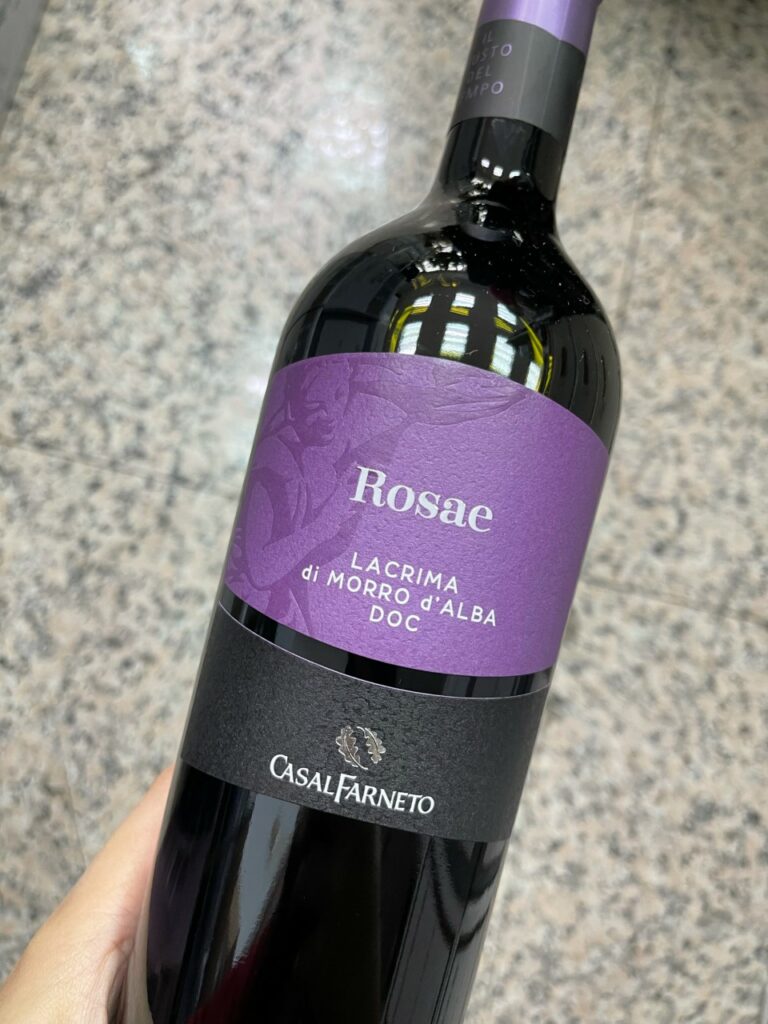
Also dark ruby. Aromatic nose offrs boatloads of flowers (violet, rose and lavender) flint, chocolate and dark cherry aromas and flavours. Suave but vibrant on the finish. Drinking window: now-2026.
4. Nascetta
Elvio Cogno not only unveiled the Novello commune’s potential for good Barolo, but also brought Nascetta, a semi-aromatic white grape (the Langhe’s only native white grape) back from oblivion. This lovely cultivar will remind you of what a wine made by crossing Sauvignon Blanc and Vermentino might taste like. Cogno’s is still the best today, but there are other lovely wines made with this variety, and not just around Novello, the wines of which carry the ‘del Comune di Novello” name tag. Langhe Nascetta, such as that of Ettore Germano and Rivetto are also excellent
Cogno 2018 Anascetta Nascetta del Comune di Novello 92
Elvio Cogno’s daughter Nadia and her husband Valter Fissore have tinkered with the recipe over the years, and their superb Nascetta wine has gone from strength to strength and will last ten years plus easily. Nascetta is a mildly aromatic white grape, so over-oaking it, and perhaps oaking it at all is hardly an enlightened idea; then again, if you have the talent that Fissore does, you can do anything you like and likely get a real good result. As he does, in fact. This steel and oak aged beauty is redolent of saline, citrus fruit and herbal nuances and has a zippy acidity that will make this not just super-enjoyable, but wonderfully food-friendly too. Drinking window: now-2028.
5. Nerello Mascalese
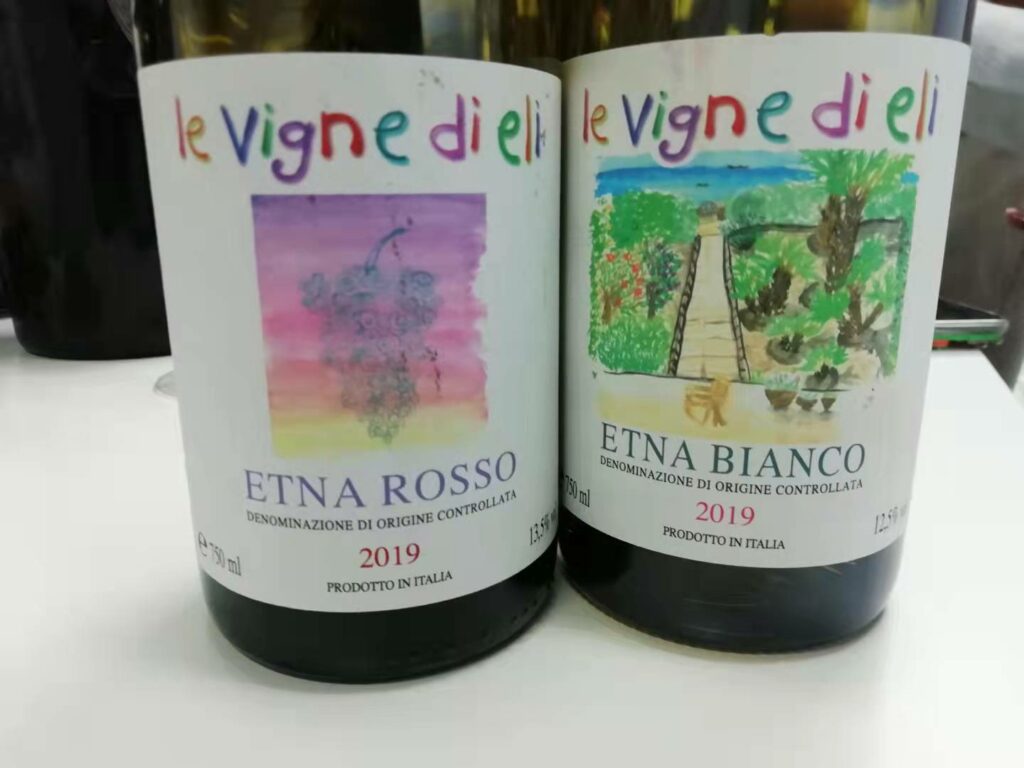
Frank Cornelissen Nerello Mascalese 2017 Magma Terre Siciliane 96
A supertalented winemaker, Cornelissen makes delicious natural, low interventionist wines that clearly convey both grape variety and the place they come from. Which is not so difficult, when natural wines are clean and pure and don’t smell and taste like something that would make a horse faint; happily, Cornelissen is blessed with crystalline talent and just about anything you’ll drink from this estate will prove delicious. His Munjebel PA (from the Porcaria contrada or cru), for example, is all finely-etched minerality, and is a fantastic Contrada (cru) wine: but for sure oomph and power, it’s hard to do better than his Magma, by far Etna’s most expensive wine (or close to it, it all depends on what Tenuta delle Terre Nere does with their pre-phylloxeric bottling), and a real masterpiece of juicy ripe fruitiness, steely backbone and mineral-lava etched nuances on the long sultry finish. Super wine. I guarantee that the red fruit deliciousness and herbaceous depth will leave lasting memories. Drinking window: 2025-2035.
6. Nosiola
Nosiola is one of those grapes that has been slowly abandoned for reasons unrelated to the quality of its wines (which is outstanding); being a miserly, difficult producer, farmers prefer to grow more remunerative grapes. That makes no sense of course if the alternative is boring-as-hell Chardonnay wines just about anyone in the world can do better or Pinot Grigio or Muller Thurgau wines that border on the insipid and neutral. Also, keep in mind that Nosiola makes what is one of Italy’s three best sweet wines, the Trentino Vino Santo, that I urge you to search out. Cesconi doesn’t make a Vino Santo, but is a real Nosiola star, and makes wines that are not just thick and rich, but also very ageworthy. Check out my upcoming Nosiola vertical from this estate in a future issue of TerroirSense Wine Review.
Cesconi 2018 Nosiola Vigneti delle Dolomiti 91
This wine speaks of the typical hazelnut perfume, a benchmark of the variety (“nosiola” is a word that derives from the Italian “nocciola”, or hazelnut) and lots of uncommon size and depth, for a wine that is usually characterized by delicacy and refinement. Though the 2018 might be a little less ageworthy than most Nosiola wines recently made by Cesconi, it exudes a lovely hazelnutty and green apple charm that I personally find irresistible. Drinking window: now-2026.
7. Pascale
I just cannot say enough good things about Pascale, and despite the fact you will most likely be able to drink one bottling of it, it is absolutely worth to hunt it down. Alessandro Dettori is the only one bottling Pascale in any commercially significant numbers currently, and you’ll have to head out to the beautiful island of Sardinia to taste any other versions, from locals that make it mostly for home consumption; in fact, most Pascale is just blended in with other red grapes to give a red wine blend that though wholly satisfying, is nothing like what Pascale can give on its own.
Dettori 2018 Pascale Ottomarzo 96
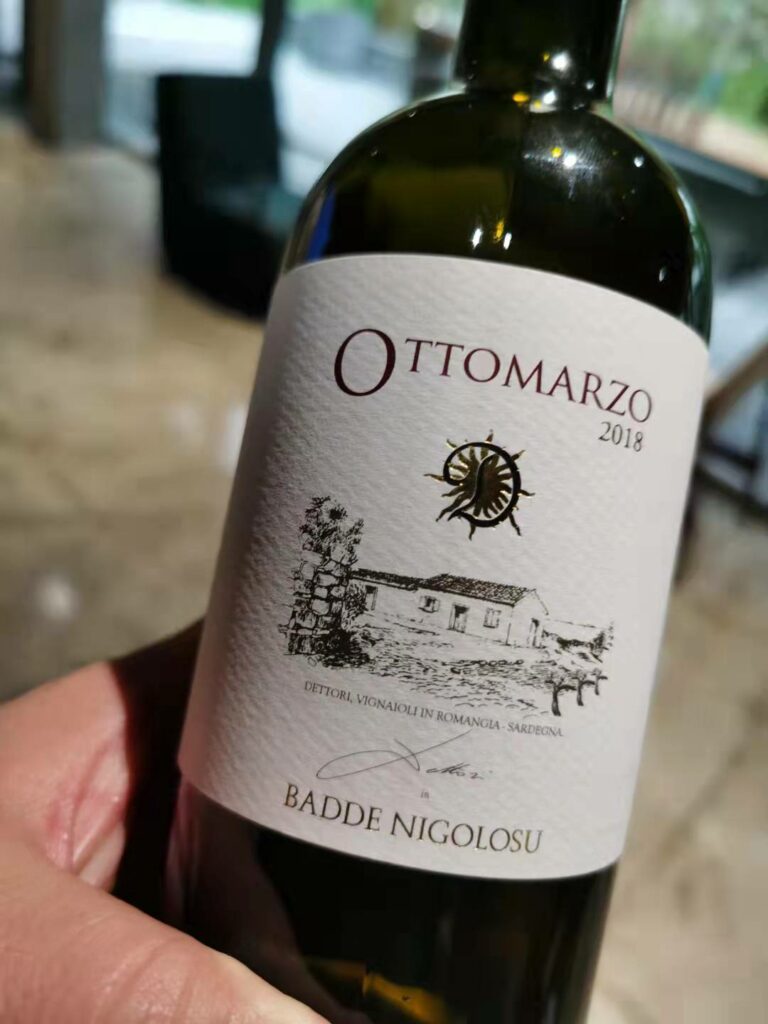
Lightly aromatic, sultry, spicy and medium-bodied, not unlike a very good Sangiovese wine but with more power, the heady mix of sweet spices and red fruit aromas and flavours will have you and your friends talking for some time after the last sip has been taken care of. One of the best Italian wines I have tasted in the last couple of years, try it; you’ll thank me later, guaranteed. Drinking window: now-2029
8. Vuillemin
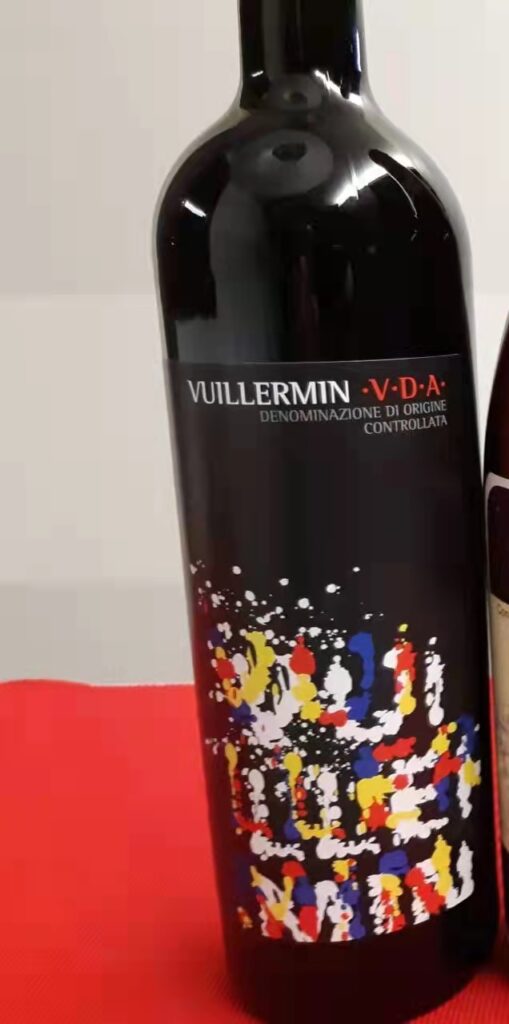
To be crystal-clear, Vuillermin gives one of Italy’s fifteen or so best red wines and the only reason it isn’t better known is because farmers don’t like the fact the wine grape produces as little as it does. Mildly aromatic (not quite as much as Mayolet, another gorgeously good Valle d’Aosta grape) and full-bodied (much more so than the lighter wines of Mayolet), its is just an amzing grape variety the wines of which you won’t forget soon. Unfortunately, very few people are producing it in a mono-variety wine currently, but search out for the two that I signal here and you won’t be disappointed.
2018 Feudi di San Maurizio Vuillermin Valle d’Aosta 95
Deep ruby-red. The explosive but elegant nose offers hints of cardamom, cilantro, plum, blueberry and blackberry reduction. Then sultry and suave in the mouth, but with real tannic backbone nicely supporting the fruit and a laser beam of acidity extending those flavours on the bright floral finish. Outstanding stuff. Drinking window: 2024-2030
2017 IAR Vuillermin Vallee d’Aoste 92
Rich deep and multilayered, with a straightforward delivery of flinty plummy fruit and suave tannins, but with lovely floral lift, this lovely Vuillermin wine showcases all of the variety’s considerable protential. Drinking window: now-2027.

 中文
中文



